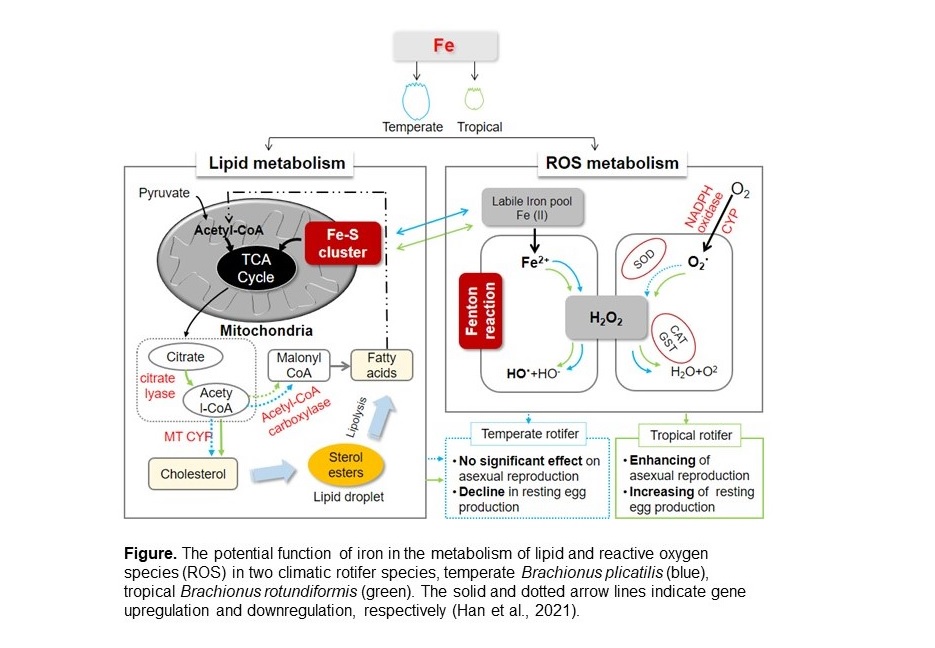April 08, 2021
Species-specific effects of iron on temperate and tropical marine rotifers in reproduction, lipid and ROS metabolisms
The international research group established by Professor Atsushi Hagiwara who is a member of graduate school of fisheries and environmental sciences, discovered species-specific effects of iron (Fe) on sexual and asexual reproductions in two different climatic (temperate and tropical) rotifer species. Iron is the most abundant element in the Earth, and also a trace essential nutrient for living organisms. Meanwhile, its negative effects have been also reported on the physiological conditions of aquatic organisms at overload concentrations. Recently, anthropogenic activities e.g., chemical industries aquacultures, agriculture, etc. are being causes of higher iron-load in the ocean, especially inshore, and thus the research group investigated iron effects on the reproductivity of estuarine rotifers. To determine the mechanisms of observed phenomena, the following parameters were further tested: lipid and reactive oxygen species (ROS) level, the gene expression of functional genes.
In this study, temperate and tropical rotifer species showed different reproductive patterns even under the same iron concentration. Sexual reproduction of temperate species was more sensitive to iron than their effects on the asexual reproduction. The resting egg production were inhibited under the iron condition which has no effect on asexual reproduction. This species showed an increase in the intracellular ROS levels and a decrease in the neutral lipid content in sexual organs, accompanied by downregulation of antioxidant components CuZnSOD and two cytochromes (CYP clan 2&3). These patterns suggested that iron-induced oxidative stress was not neutralized by its antioxidant defense system, thus negatively affecting the fecundity of fertilized mictic females.
The tropical species showed a dose-dependent increase in population growth rate (asexual reproduction) with extended lifespan and active sexual reproduction. Tropical species showed better antioxidant mechanism compared to temperate species. The genes involved in lipid synthesis (citrate lyase, mitochondrial CYP) and reproduction (vasa, sirtuin-2) were significantly upregulated. These patterns imply that tropical species should have higher resilience in response to iron-induced oxidative stress. It is confirmed that the different strategies and tolerances against environmental stresses i.e., iron concentrations between two climatic estuarine rotifer species in a habitat-dependent manner.
This study has been published online in Chemosphere on Mar 16, 2021.
|
|
https://www.sciencedirect.com/science/article/pii/S0045653521007876











